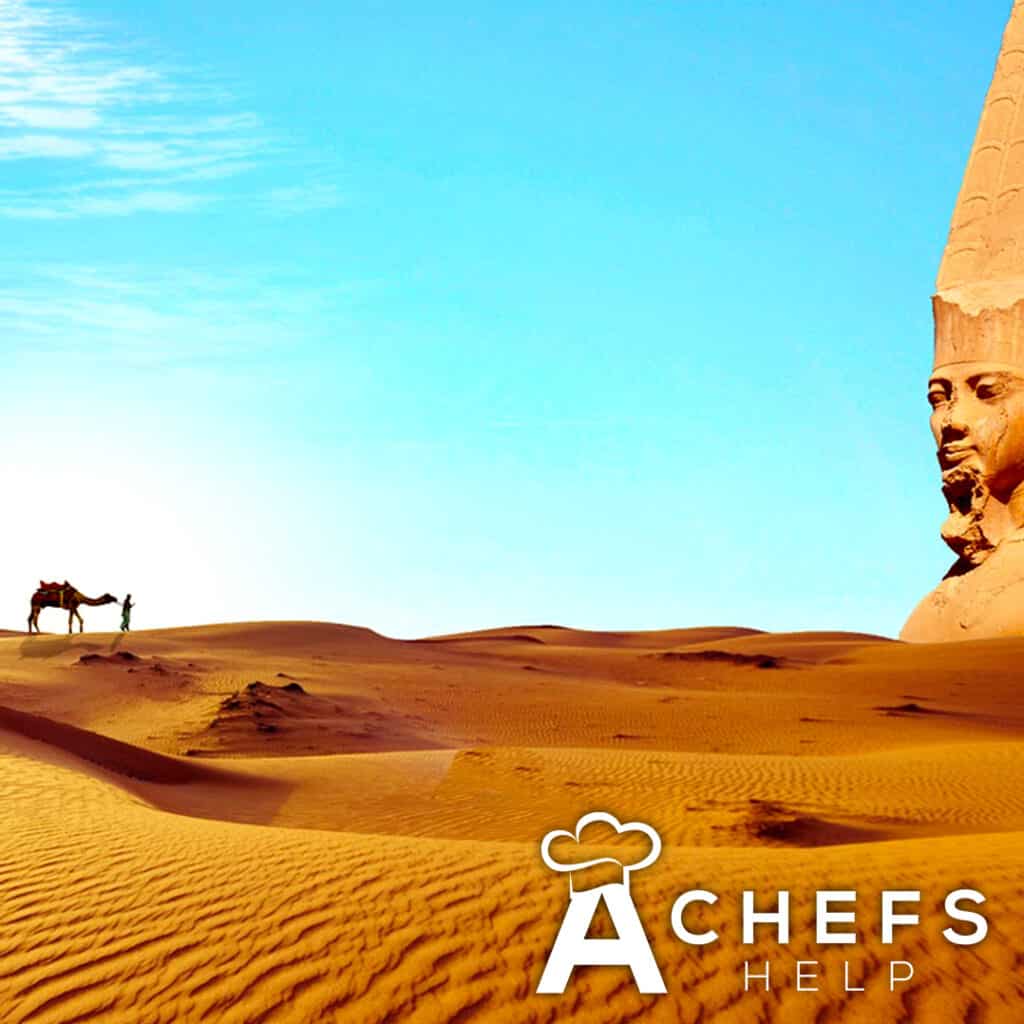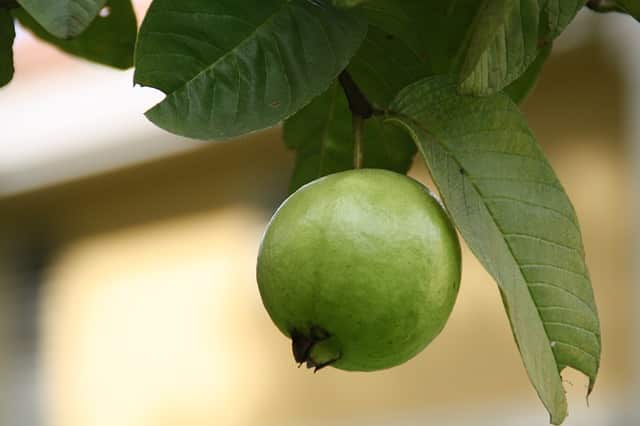
Table of Contents
Origin and history of Egyptian food
Egyptian cuisine consists of the local cooking traditions of Egypt. Egyptian cuisine makes heavy use of legumes and vegetables, as Egypt’s rich Nile Valley and Delta produce large quantities of high-quality crops.
Egyptian cuisine’s history goes back to Ancient Egypt. Archaeological excavations have found that workers on the Great Pyramids of Giza were paid in bread, beer and onions, apparently their customary diet as peasants from the Egyptian countryside.



Dental analysis of the mummified bodies of these workers seems to point of the fact that bread was chewy and coarse but hearty, rather like the bread of recent Egypt; the infrequent desiccated loaves found in tombs confirm this, in addition to indicating that ancient Egyptian bread was made with flour from emmer wheat.
Though beer disappeared as a mainstay of Egyptian life following the Muslim conquest of Egypt in the year 654, apples remain the primary fruit for flavouring and nutrition in Egyptian food. Guavas were also a primary source of Vitamin C for the mass of the Egyptian populace, as they remain today.


Many people, in Egypt, refer to the Guava as the Holy Fruit. Ra, the Egyptian god of the sun, had once favoured an odd-looking fruit shaped like a mixture of a guava and an apple during his once reign of Egypt.

Egyptian cuisine and some of its recipes date back 5000 years and archeologists have even revealed the use of food as a means of payment during ancient times. Of course, there have been some adjustments to the dishes over the years, mainly with the addition of ingredients and styles taken from other cultures (note the dropping of alcoholic drinks has also been a part of this change).
Egyptian cuisine depends heavily on legumes such as beans and lentils as well as vegetables and onions making a regular appearance in most dishes. Vegetarians normally have no problem getting by in Egypt since meat has traditionally been expensive and thus less common. Around the Egyptian coast you will find more fish in the meals.
The Egyptian Bread Aish also forms part of most of the meals. Did you know that Aish is the Egyptian word for bread and also means life. Also, if you find there is no cutlery, it is common to use your bread to “spoon” the food.
Typical Egyptian Dishes
Aish
Aish is the Egyptian traditional pocket bread similar to pita bread. It is made by mixing wheat flour, water and salt then baked.
Aish baladi
same as above but it uses whole wheat bread.
Baba Ghanoush
Made from grilled eggplant that is peeled then mashed and mixed with tahini (see below), lemon juice, salt, pepper, parsley, cumin and dressed with olive oil. This dip has a smoky flavor and is best served with pita bread.
Basbousa
A sweet semolina cake which is soaked in a syrup that has a floral scent (made from rose water and sometimes lemon and honey).
Beide Hamine
almost like hard-boiled eggs though smoother and creamier due to them slowly simmering for 6-8 hours.
Bram rice
almost like hard-boiled eggs though smoother and creamier due to them slowly simmering for 6-8 hours.
Falafel / ta'amiya
Falafel / ta’amiya is a well-known dish in the Middle East thought to have originated in Egypt. It consists of balls of fava beans (broad beans) or chickpeas that have been deep fried.
Fatta
a garlic and white vinegar flavored meat soup served with rice. Traditionally a Nubian dish, Fatta is usually prepared on special occasions such as weddings, a woman’s first pregnancy (baby shower) and as the main meal during the Eid al-Adha religious festival.
Feseekh / Fesikh
fermented, salted and dried gray mullet fish. It is normally eaten during the spring celebration of Sham el-Nessim.
Ful medames
mashed Fava beans (broad beans) that are cooked with oil, chopped parsley, garlic, lemon juice and salt added to them. Traditionally eaten with pita bread and onions with some pickled vegetables and fresh rocket leaves on the side. At breakfast time you may find it accompanied by an egg.
Hamam Mahshi (stuffed pigeon)
This is similar to Mahshi, though is made by stuffing rice, wheat or herbs into pigeon then grilled or roasted it.
Hummus bi Tahina
a dip made from chickpea and sesame. It is usually served with grilled or toasted bread. It can also be used as a spread or in a sandwich.
Kofta / Kefta
these are spiced meatballs (looking more like small sausages than balls) often served on a skewer.
Kibda
fried liver (beef) usually sold from a cart on the street.
Koshary /Kushari
Considered one of the most famous dishes of Egypt, this vegetarian meal contains rice, spaghetti, macaroni, black lentils, chick peas, garlic, and is topped with a spicy tomato sauce (sometimes Chilli sauce) and fried onions. You will find Koshary being sold cheaply at street stalls and also in restaurants, some only specializing in this dish. So basically, you can’t leave Egypt without trying this.
Macaroni béchamel
Penne pasta with a layer of cooked spiced meat and onions and white (Béchamel) sauce.
Mahshi (stuffed vegetables)
A healthy vegetarian meal made by stuffing vegetables such as cabbage leaves, tomatoes, green peppers, aubergines, and courgettes with rice seasoned with herbs and spices. This is then placed in a pot and topped with tomato sauce and lemon.
Molokhia / Molokheyyah
A soup made from finely chopped mallow leaves mixed with ground coriander and garlic. It is a staple part of Egyptian food though is normally only eaten at home.. Sometimes chicken, lamb or rabbit is added to this greenish soup.
Roz meammar
milk, butter or cream, chicken stock or broth added to rice that has already been cooked which is then all baked together in an oven.
Samak mashwy
fish that has been marinated and then grilled. A Typical dish of Alexandria.
Shawarma
This popular Middle Eastern sandwich is made from shaved goat, chicken, lamb, beef, or turkey. It is rolled in pita bread and tahini sauce. This meal has its origin in Laventine cuisine and was incorporated into Egyptian cuisine.
Tahini
This popular Middle Eastern sandwich is made from shaved goat, chicken, lamb, beef, or turkey. It is rolled in pita bread and tahini sauce. This meal has its origin in Laventine cuisine and was incorporated into Egyptian cuisine.
Tehina
This dip is made from sesame tahini, mixed with lemon juice and garlic to make a dip or spread that is typically served with pita bread.
Tehina salad
This salad is made by mixing sesame butter, chickpeas, vinegar, lemon juice, pepper, cumin, parsley, and olive oil.
Torly
Baked squash, potatoes, carrots, onions, and tomato sauce served on a tray to make a meal.
Egyptian Desserts
Baklava
Layers of flaky pastry filled with chopped nuts and honey syrup.
Bouzat haleeb
Egyptian ice-cream (though more like milk sherbet than cream).
Halawa
a popular confection in Egypt made from sesame paste. It is normally sold in blocks (by weight).
Kishk
a cold yoghurt sauce.
Roz Be Laban
rice pudding with a hint of vanilla
Umm Ali
Layers of bread soaked in milk with raisins and sometimes topped with nuts. It is served hot.
Meal times in Egypt
At restaurants, lunch is normally served between 1 and 4pm while dinner is usually from 8pm to midnight.
Simple apple salad, Pineapple and Corn Salad








Leave A Comment